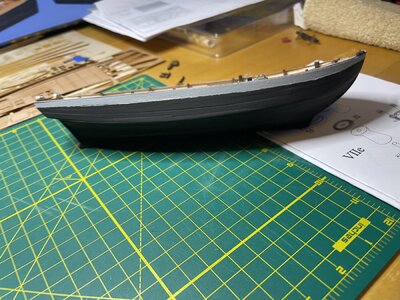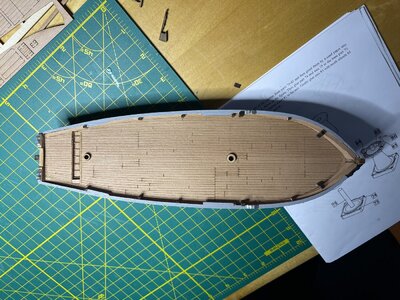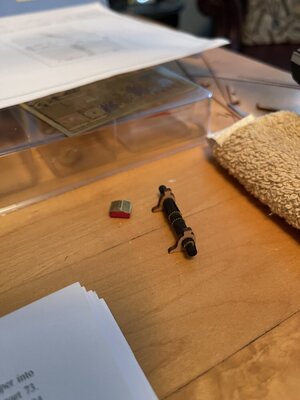Yes. I noticed that too. Several anomalous features, like the small rectangular patch of two beside four planks making up a very purposeful looking specific rectangular pattern, a couple of plank widths just to the right and a little aft of the main mast, along with some other curiously irregular, but purposeful looking, not random, patterns. Maybe they appeared in the plans, or deck pattern if it was printed, without explanation which wouldn't surprise me, adding to the mysteries left unanswered in various kits. Or perhaps they reflect repairs and patches made to the actual boat from which the model was designed?
Can you shed any light? Just curious.
Thanks in advance, Pete



















